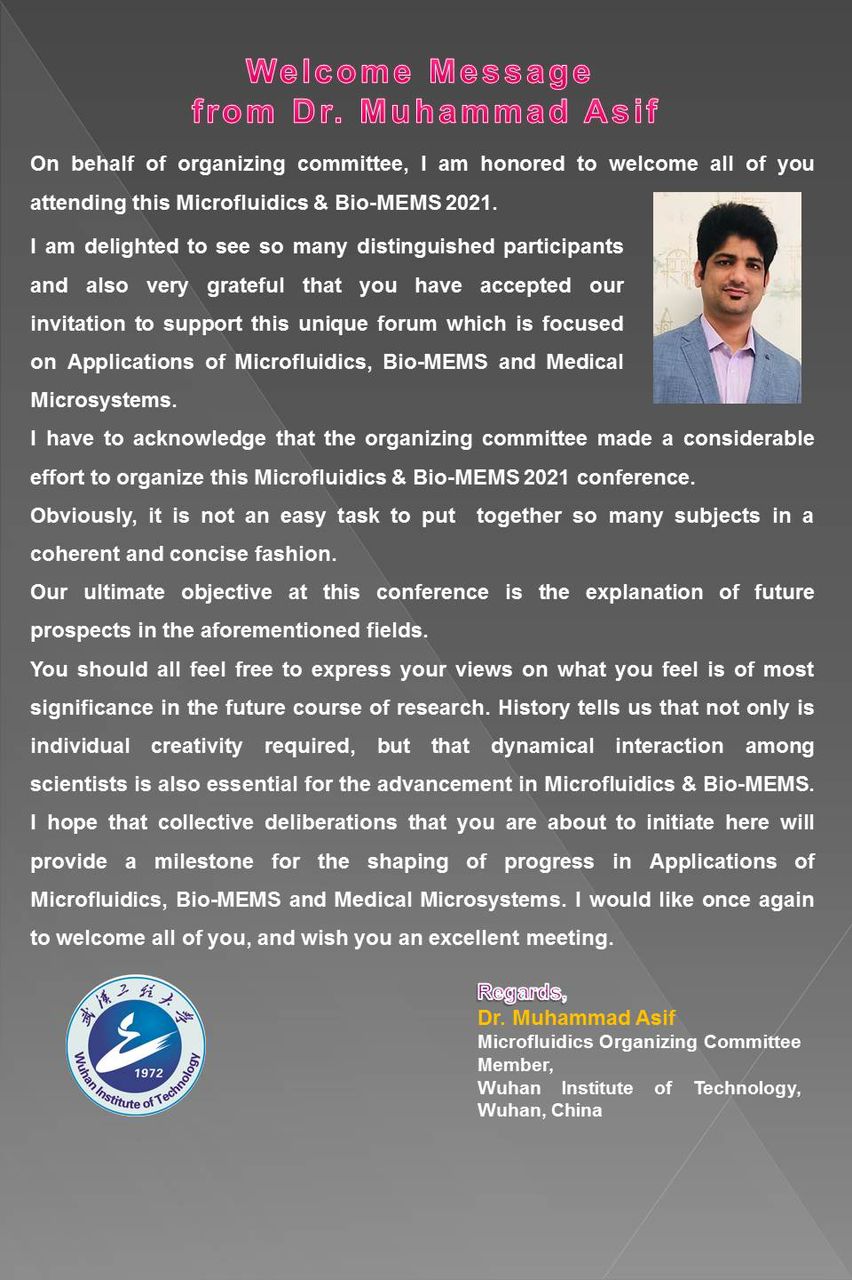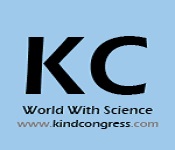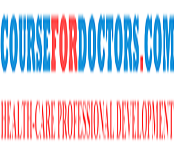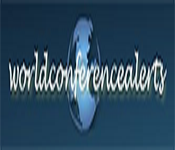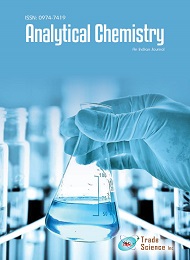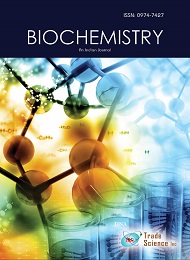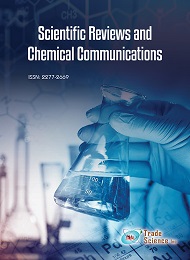Theme: Applications of Microfluidics, Bio-MEMS and Medical Microsystems
Renowned Speakers
Microfluidics-2021
International Conference on Microfluidics & Bio-MEMS heartily welcomes the worldwide audience to participate within the conference that goes to be control in December 13-14, 2021 at Berlin, Germany. The theme of this conference is to elucidate about the applications of Microfluidics, Bio-MEMS, and Medical Microsystems. Microfluidics may be a field having a rapid climb , indeed since its dawn microfluidics applications became more and more relevant in life sciences. the rationale for this success is thanks to the unique chemical and physical features that occur in fluids at the micron size, which permit to possess several advantages over conventional “macro”-techniques. Furthermore, microfluidics devices are generally easy to use and to manufacture and yet, cost effective.
Session 01: Applications of Microfluidics & Lab-on-a-chip
Lab-on-a-chip (LOC) devices consolidate and scale down laboratory functions and processes to a miniaturized chip format. Many LOC devices are used in a wide array of biomedical and other analytical applications involving rapid pathogen detection, clinical diagnosis, forensic science, electrophoresis, flow cytometry, blood chemistry analysis, protein and DNA analysis.
Related to Conference : Microfluidics Conference | Microfluidics Congress | Microfluidics Webinar | Microfluidics Meetings| Microfluidics Event| Microfluidics Applications
Droplet-based digital microfluidics is a topic with growing importance to biological, chemical, and health-science fields. The high fedility and magnificent reagent economy of such systems are unparalleled. There are, however, elementary challenges related to actuation and sensing in terms of system scalability, and these challenges are addressed within this chapter. In particular, a new digital microfluidics multiplexer is shown to overthrow simultaneous on-chip micro drop motion addressability issues and terminate droplet involvement challenges.
Related to Conference : Microfluidics Conference | Microfluidics Congress | Microfluidics Webinar | Microfluidics Meetings| Microfluidics Event| Digital Microfluidics
Session 03: Point-of-care & Biosensors
Point-of-care testing (POCT) is necessary for the rapid detection of analytes near to the patient, which facilitates better disease diagnosis, monitoring, and management. Recent years have marked massive advances in point-of-care diagnostics (POCD), which are a result of constant developments in biosensors, microfluidic, bioanalytical platforms, assay formats, lab-on-a-chip technologies, and complementary technologies.
Related to Conference : Microfluidics Conference | Microfluidics Congress | Microfluidics Webinar | Microfluidics Meetings| Microfluidics Event| Biosensors
Session 04: DNA (Deoxyribonucleic acid) and Bio MEMS
The Human Genome Project introduced an era during which individualized approaches to medicine are possible through an analysis of a person’s DNA. The 1997 movie “GATTACA”, considered a world during which genetic engineering allowed parents to work out the entire genetic makeup of their children. With genetically perfect offspring, the film proposed a replacement brand of discrimination, one supported "science”. In 2007 the concept introduced in “GATTACA” became a possibility with the event and availability of DNA Lab-on-a-chip devices. These devices are used not just for basic research, but also within the field of forensics and disease prediction.
Related to Conference : Microfluidics Conference | Microfluidics Congress | Microfluidics Webinar | Microfluidics Meetings| Microfluidics Event| DNA (Deoxyribonucleic acid
Session 05: Drug Delivery Systems
Drug delivery systems are a therapeutic application of bio MEMS. Pumps delivering insulin in implantable devices are samples of a drug delivery system. Other examples include the Medtronic SynchroMed Pump that administers morphine within the spine, and piezo electrically activated pumping devices used for drug delivery applications. Researchers also are examining long-term integration of living cells with inorganic materials creating a sensing and delivery platform both in vitro and in vivo.
Related to Conference : Microfluidics Conference | Microfluidics Congress | Microfluidics Webinar | Microfluidics Meetings| Microfluidics Event|Drug Delivery Systems
Session 06: Nano-channel, Micro-channel and Mini-channel
Micro-channels are identified as stream sections that have pressure driven measurements in the scope of 10 to 200 micrometers. Methods/Statistical Analysis: It is presumed that the current work would provide new direction to the researcher in the field of micro channel heat sink. Findings: Subsequent to looking into the progression in warmth interchange innovation from a verifiable point of view, the advantages of utilizing micro channels as a part of high warmth flux cooling implementation is inspected and research done on various parts of micro channel heat exchanger execution is assessed.
Related to Conference : Microfluidics Conference | Microfluidics Congress | Microfluidics Webinar | Microfluidics Meetings| Microfluidics Event|Nano-Channel
Session 07: Bio-fabrication & Bio-manufacturing
Bioprinting with the 3D-bioplotter allows medical researchers to mix cells, gels, fibers, polymers, ceramics, metals and more into one scaffolded object which will replace a diseased, injured or missing part , from tissue and bone to organs.
In fact, biofabrication research is beingwiped out a good range of areas:
Skin
Cartilage
Bone
Blood vessels
Organslike the guts , kidney, placenta and ovaries
Drug and nutrient delivery
In fact, biofabrication research is being
Skin
Cartilage
Bone
Blood vessels
Organs
Drug and nutrient delivery
Related to Conference : Microfluidics Conference | Microfluidics Congress | Microfluidics Webinar | Microfluidics Meetings| Microfluidics Event| Bio-Frabication
Session 08: Optofluidics, Plasmonic and Bioimaging devices
Bio-imaging generally indicates imaging techniques that acquire biological information from living forms. Recently, the power to detect, diagnose, and monitor pathological, physiological, and molecular dynamics is in great demand, while cutting down the observing angle, achieving precise alignment, fast actuation, and a miniaturized platform become key elements in next-generation optical imaging systems.
Related to Conference : Microfluidics Conference | Microfluidics Congress | Microfluidics Webinar | Microfluidics Meetings| Microfluidics Event|Optofluidics
Session 09: Acoustic Droplet Ejection
Acoustic bead discharge utilizes a beat of ultrasound to maneuver low volumes of liquids (ordinarily nanolitres or picolitres) with no physical contact. This innovation centres acoustic vitality into a liquid example with a selected end goal to discharge beads as little as a millionth of a millionth of a litter. ADE innovation is an exceptionally delicate process, and it are often utilized to exchange proteins, high sub-atomic weight DNA and live cells without harm or loss of feasibility. This element makes the innovation reasonable for a good assortment of uses including proteomics and based examines.
Related to Conference : Microfluidics Conference | Microfluidics Congress | Microfluidics Webinar | Microfluidics Meetings| Microfluidics Event
Session 10: Tissues-on-a-chips and 3D Cell Culture Systems
Lab on a chip and microfluidics are essential technologies with countless applications from drug delivery to tissue engineering. LOC integrates fluidic and electronic elements on one chip and becomes very attractive thanks to the likelihood of their state of art execution in personalized devices for the purpose of care treatments. The implementation of microfluidic devices within life sciences has furthered the chances of both academic and industrial applications like rapid genome sequencing, predictive drug studies, and single cell manipulation.
Related to Conference : Microfluidics Conference | Microfluidics Congress | Microfluidics Webinar | Microfluidics Meetings| Microfluidics Event
Session 11: Point-of-care Diagnostics & Global Health
Biomedical engineers have traditionally developed technologies in response to the requirements of the developed world's medical profession . As a result, the diagnostic systems on which they need worked have met the wants of well-funded laboratories in highly regulated and quality-assessed environments. However, such approaches don't address the requirements of the bulk of the world's people afflicted with infectious diseases, who have, at best, access to poorly resourced health care facilities with almost no supporting clinical laboratory infrastructure.
Related to Conference : Microfluidics Conference | Microfluidics Congress | Microfluidics Webinar | Microfluidics Meetings| Microfluidics Event
Session 12: Microfluidics Simulation
Simulations of microfluidic devices are regulate as an example within the process of design of latest apparatus for drug delivery. Whatever case, fluid flow simulation is merely a neighbourhood of the larger development process. After completing flow investigation, one can investigate as an example transport and diffusion of chemical species in such a tool.The microfluidics Module leads you easily-operated tools for studying microfluidic devices.Essential applications involves simulations of lab-on-a-chip devices, digital microfluidics, electrokinetic and magnetokinetic devices, and inkjets.
Related to Conference : Microfluidics Conference | Microfluidics Congress | Microfluidics Webinar | Microfluidics Meetings| Microfluidics Event| Microfluidics Simulation
The global microfluidics market size was valued at USD 17.9 billion in 2020 and is expected to expand at a compound annual growth rate (CAGR) of 16.3% from 2021 to 2028. The market is majorly driven by the rising number of clinical studies for cell-based therapies. Rapid demand for low-volume sample analysis, high-throughput screening methodologies, In Vitro Diagnostics (IVD), and development of advanced lab-on-a-chip technologies are collectively contributing to market growth. Moreover, microfluidics offers a high return on investment and helps in cost control by minimizing errors. Pre-hospital analysis like routine blood glucose level check can be done at home, thereby reducing the number of hospital visits and stays. The point-of-care diagnostics introduced by various market players led to decreased hospital visits and early disease diagnosis. With advanced technologies, industry players now differentiate their products using minimally invasive features along with speed and accuracy. Microfluidics has thus made its mark in the IVD market. Moreover, miniaturization is crucial for microfluidics to be potentially applied across wearable devices. The concept of incorporating microfluidics to manufacture pocket-sized/wearable devices has encouraged various large companies such as F. Hoffmann-La Roche Ltd., BD (Becton Dickinson and Company), and Abbott to expand their microfluidics portfolio across clinical, Point-of-Care (POC), and veterinary diagnostics. Other key vendors include Agilent Technologies, Inc.; Illumina, Inc.; and Fluidigm Corp.The application of microfluidics is growing in the field of diagnostics, especially in POC diagnostics.
Material Insights
The Polydimethylsiloxane (PDMS) segment dominated the microfluidics market and accounted for the largest revenue share of 34.7% in 2020. Polydimethylsiloxane has gained significant popularity among other polymers, particularly in microfluidic devices with rapid prototyping. This is attributed to the high acceptance of these polymers among academic professionals, mainly due to the easy fabrication and affordability associated with the material.
Microfluidics 2021 will compile microfluidics scientists and Nano-system people to showcase the most recent developments and discuss further directions in microfluidic technologies and their applications in complex systems, broadly defined. The topics are going to be wide-ranging, including chemical synthesis, separations, advanced manufacturing approaches, energy and therefore the environment, multiphase and colloidal systems, systems biology, synthetic biology, biophysics, organs-on-a-chip, and precision medicine. some important foremost microfluidics applications are plot so on gives a thought on how this new science can both assistance and lift check out in fields like science and prescription. In any case, there's plenty of space for enhancements so on spread more microfluidics applications past research simply.
Conference Series LLC Ltd successfully hosted its premier 12th International Conference & Exhibition on Biosensors & Bioelectronics during October 25-26, 2019 in Vancouver, Canada. The conference brought together a broad spectrum of the Biosensors and Bioelectronics education community, educators from research universities with their programs and state colleges from across the world, as well as representatives from industry and professional environmental societies.
Keynote Presentation on:
-
Sensing molecular events in living cells, by Xian-En Zhang, Chinese Academy of Sciences, China
-
On-chip energy harvesting and storage for wearable or implantable applications, by Xiaohong Wang, Tsinghua University, China
-
Powering biosensors with disposable biobatteries, by Seokheun “Sean” Choi, State University of New York-Binghamton, USA
International Conference on Chemical Engineering hosted by the ConferenceSeries was held during August 28-29, 2018 at Holiday Inn, Marne La Valley, Paris, France with the theme “Changing the World by Exploring Newer and Sustainable Technologies in Chemical Engineering". Active participation was received from the Editorial Board Members of OMICS Group Journals as well as from the scientists, researchers, students and leaders from the fields of Chemical Engineering, who made this event successful.
The conference was initiated with a series of lectures delivered by both Honorable Guests and members of the Keynote forum. The list included:
-
Bor-Yann Chen, National I-Lan University, Taiwan
-
Nemer Muhanna, Sadara Chemical Company, Saudi Arabia
-
Kigho Moses Oghenejoboh, Delta State University, Nigeria
-
Hong Yin, Zhejiang University, China
-
Antonio Greco, University of Salento, Italy
The “20th Global Congress on Biotechnology” (Biotech Congress 2018) hosted by Conference Series LLC Ltd during the month of March 5-7 2018 at London, UK with a theme “Future prospects for Biotechnology and Bioeconomy”, was a great success where eminent Keynote Speakers from various reputed institutions with their resplendent presence addressed the gathering.
The conference proceedings were carried out through various Scientific-sessions and plenary lectures, of which the following Speakers were highlighted as Keynote Speakers:
-
Peter J F Henderson, Astbury Centre for Structural Molecular Biology - University of Leeds, UK
-
Magali Rimbaud Simeon, INSA - Université de Toulouse, France
-
Omirbekova N Zh, Al-Farabi Kazakh National University, Kazakhstan
The ''18th International Conference and Exhibition on Materials Science and Engineering ” , hosted by the Conference Series was held during May 28-30, 2018 at Osaka, Japan. Based on the theme “Quarrying Novelties of Material Science and Engineering”. Benevolent response and active participation was received from the Organizing Committee Members along with Scientists, Researchers, Students and leaders from various fields of Materials Science and Engineering, who made this event a grand success.
Conference Series expresses its gratitude to the conference Honourable Guests and Keynote Speakers includes:
-
Chia-Jyi Liu, National Changhua University of Education, Taiwan
-
Sirikanjana Thongmee, Kasetsart University, Thailand
-
Jun Ding, National University of Singapore, Singapore
-
Uwe Erb, University of Toronto, Canada
Chemical Engineering Conference has been successfully completed during September 12-14,2016 at Phoenix,USA - and we must say Thanks to the attendees, Hilton Atlanta Airport Staff, and the Organizing Committee, Ad-Sponsors & Media partners and everyone else that helped to make this International Conference and Exhibition on Chemical Engineering with the theme: Emerging technologies and scientific advancements in Chemical Engineering and its Applications a successful conference.
The Keynote presentations were given by:
-
Ravindra Pogaku, University Malaysia Sabah (UMS), Malaysia
-
Suzanne Giasson, Université de Montréal, Canada
-
Richard J Spontak, NC State University, USA
-
Haresh Manyar, Queen’s University Belfast, UK
-
Amarjit Bakshi, Refining Hydrocarbon Technologies LLC, USA
-
Aymn Abdulrahman, University of Maine, USA
-
Jehad Abu-Dahrieh, Queen’s University Belfast, UK
Conference Highlights
- Applications of Microfluidics & Lab-on-a-chip
- Droplet-based, Digital, Centrifugal Microfluidics
- Point-of-care & Biosensors
- DNA (Deoxyribonucleic acid) and Bio MEMS
- Drug Delivery Systems
- Nano-channel, Micro-channel and Mini-channel
- Bio-fabrication & Bio-manufacturing
- Optofluidics, Plasmonic and Bioimaging devices
- Acoustic Droplet Ejection
- Tissues-on-a-chips and 3D Cell Culture Systems
- Point-of-care Diagnostics & Global Health
- Microfluidics Simulation
To share your views and research, please click here to register for the Conference.
To Collaborate Scientific Professionals around the World
| Conference Date | December 13-14, 2021 | ||
| Sponsors & Exhibitors |
|
||
| Speaker Opportunity Closed | |||
| Poster Opportunity Closed | Click Here to View | ||
Useful Links
Special Issues
All accepted abstracts will be published in respective Our International Journals.
- Journal of Electrical Engineering and Electronic Technology
- Journal of Biomedical Engineering and Medical Devices
Abstracts will be provided with Digital Object Identifier by







